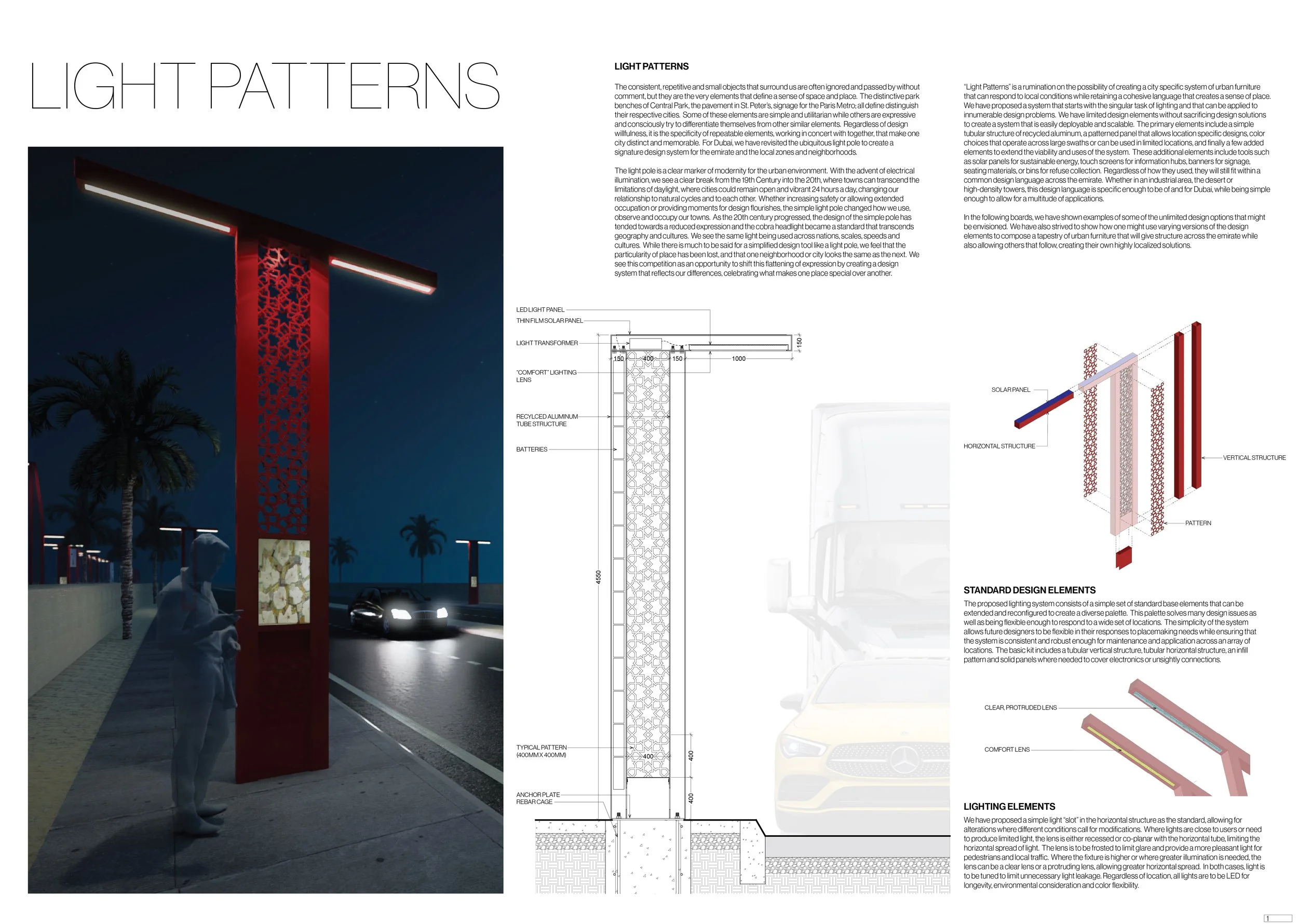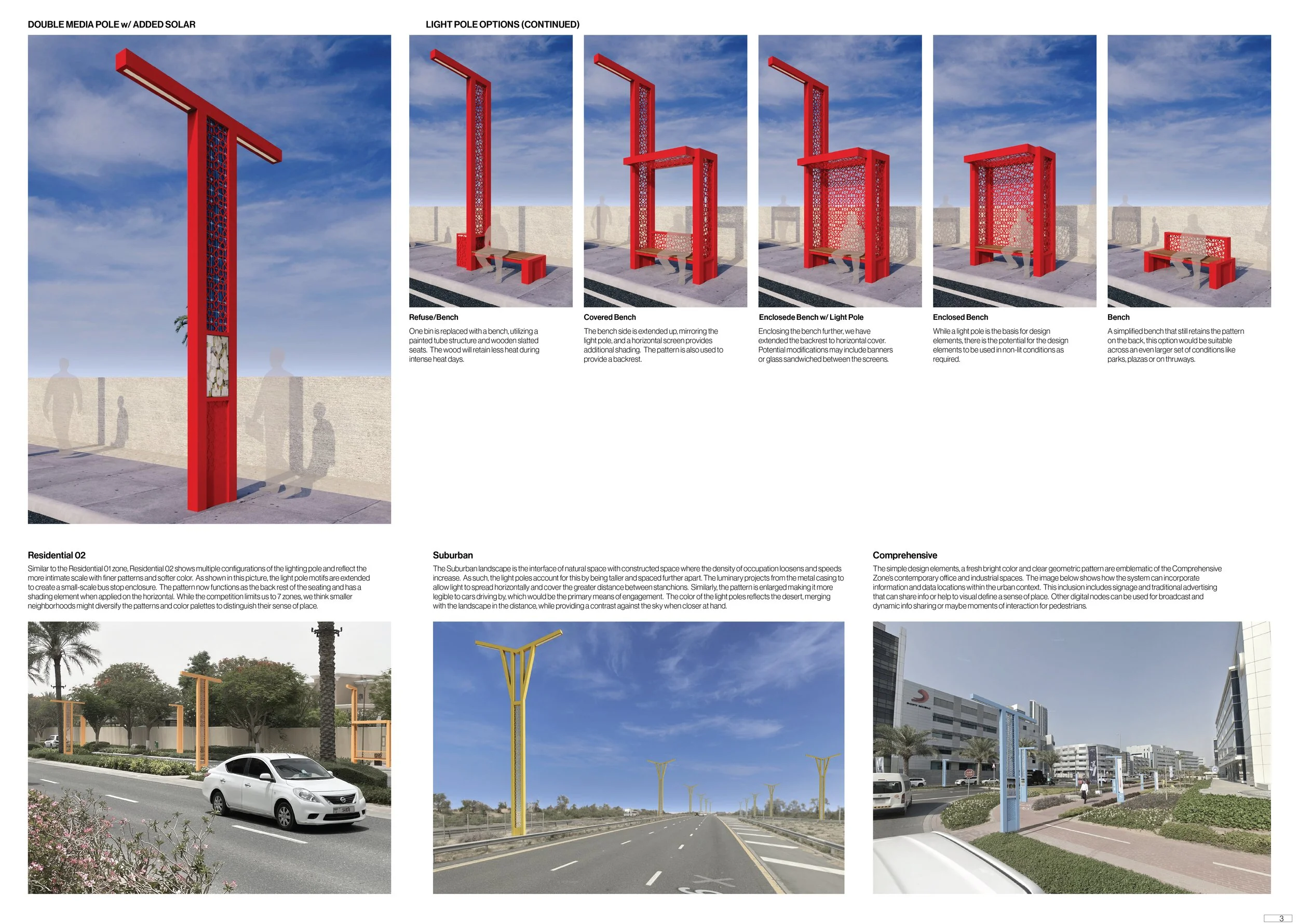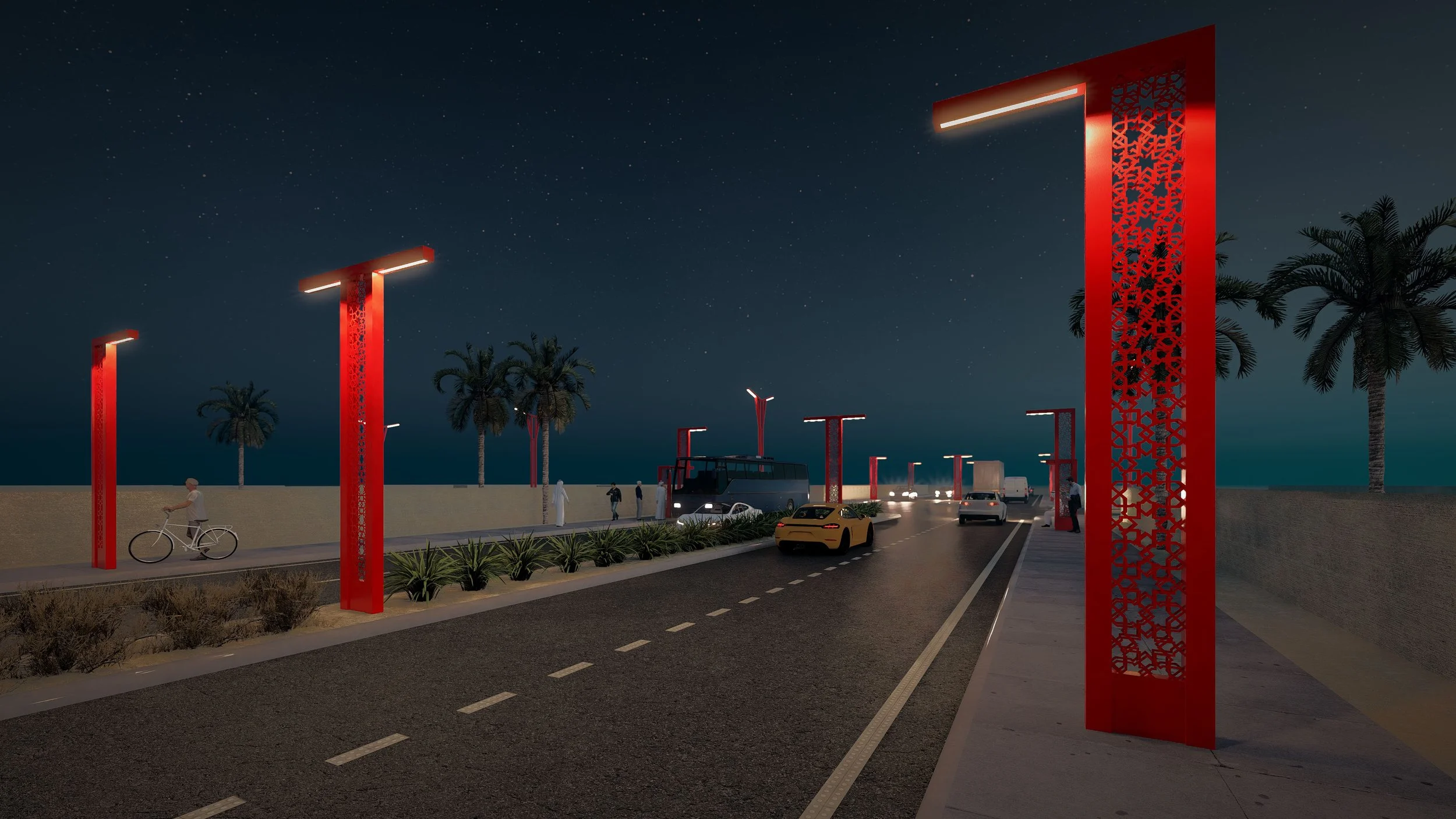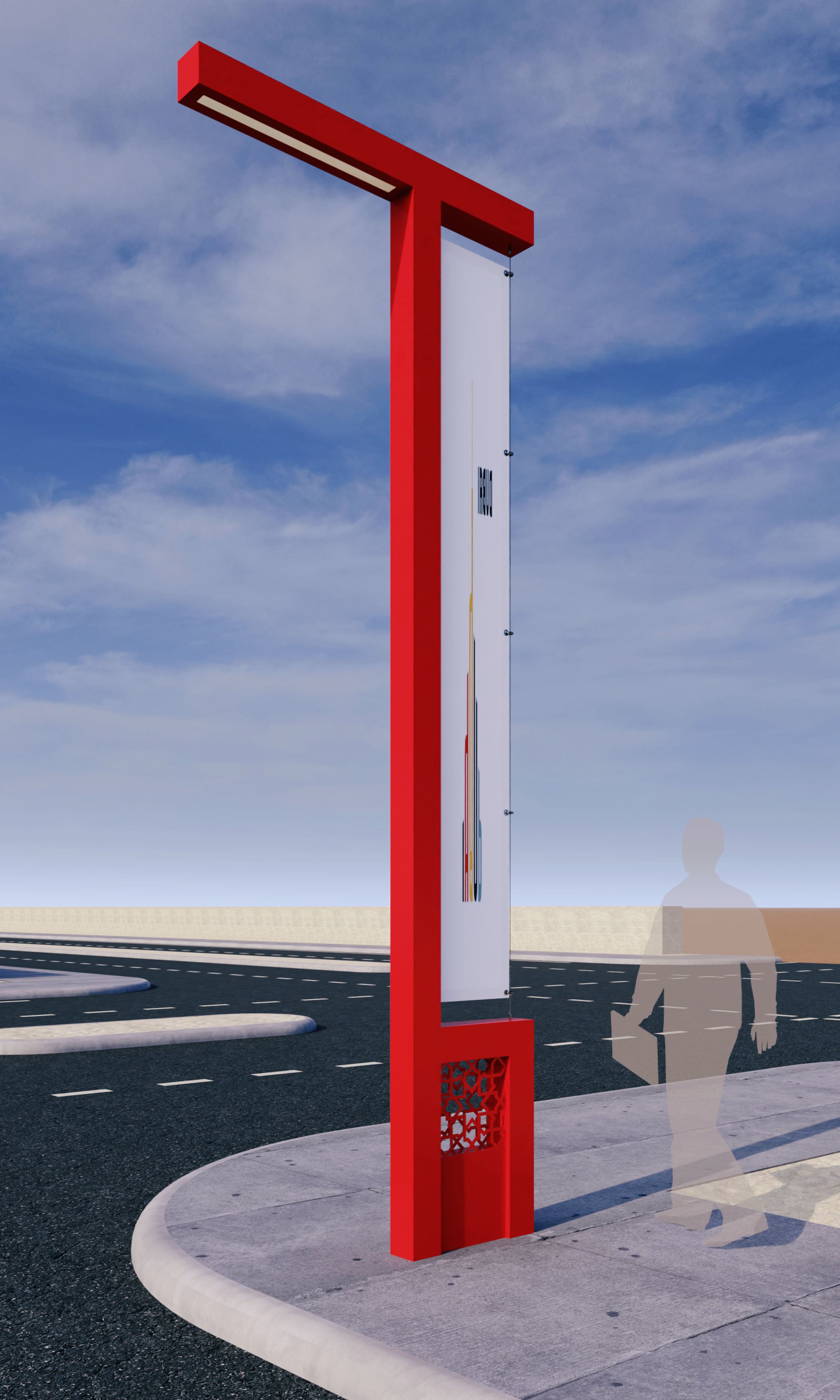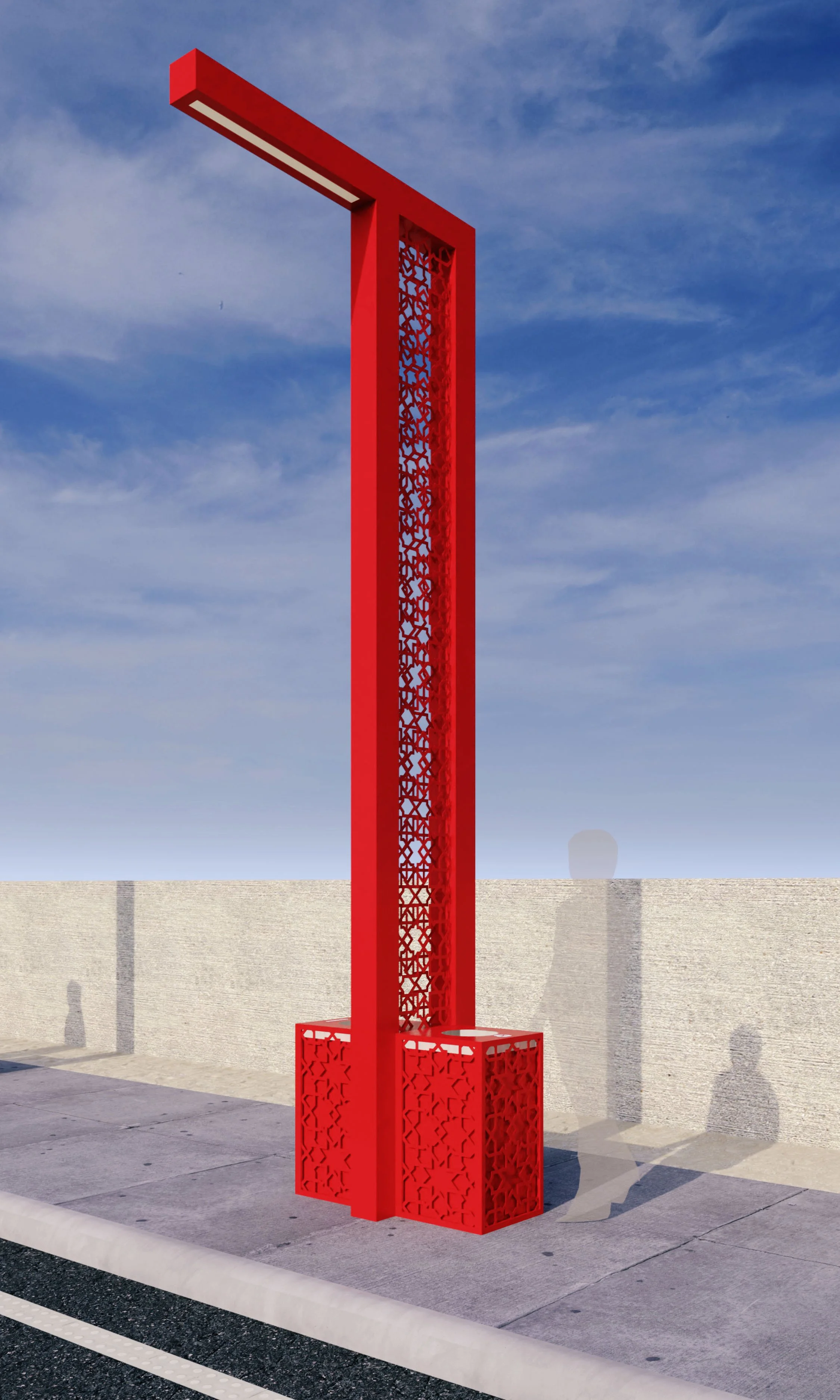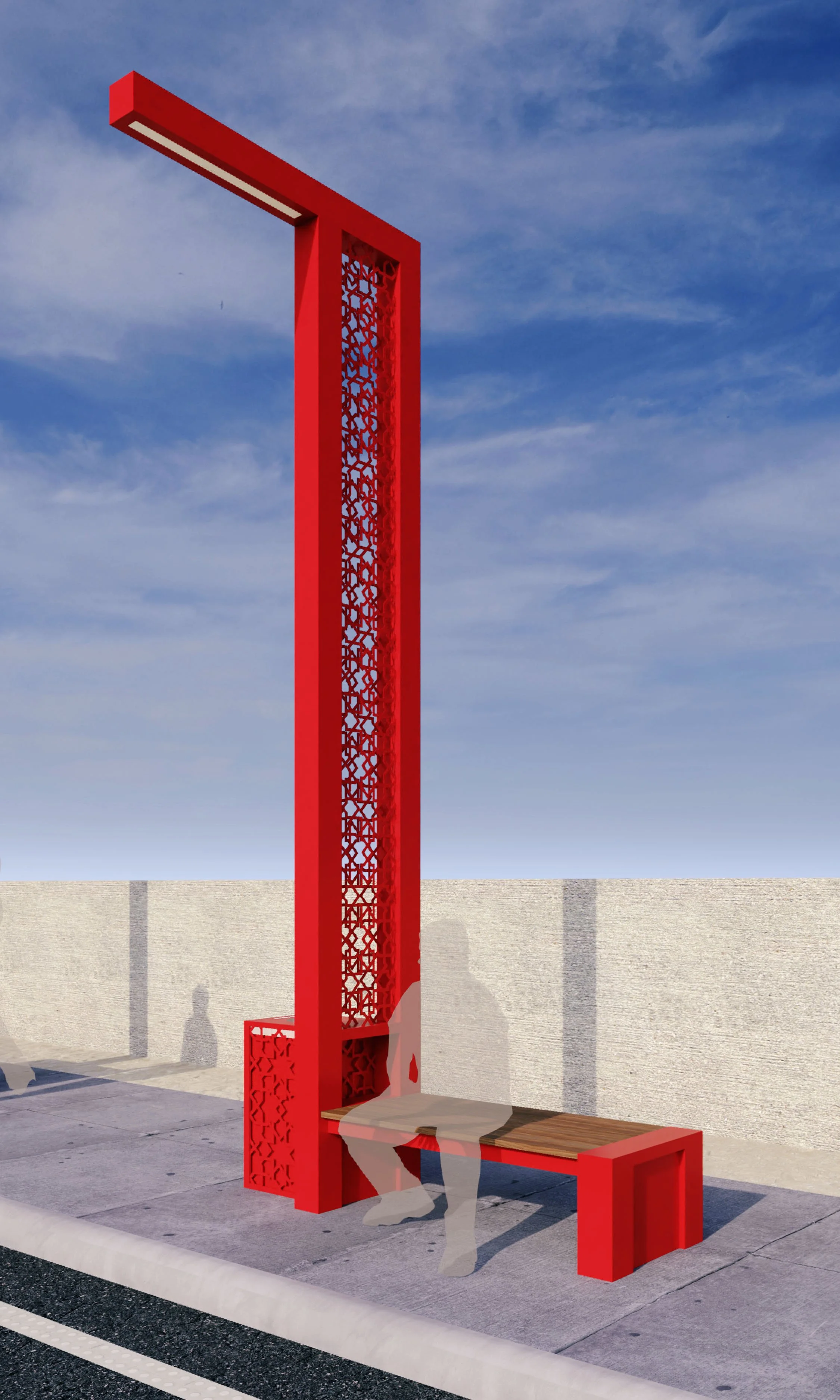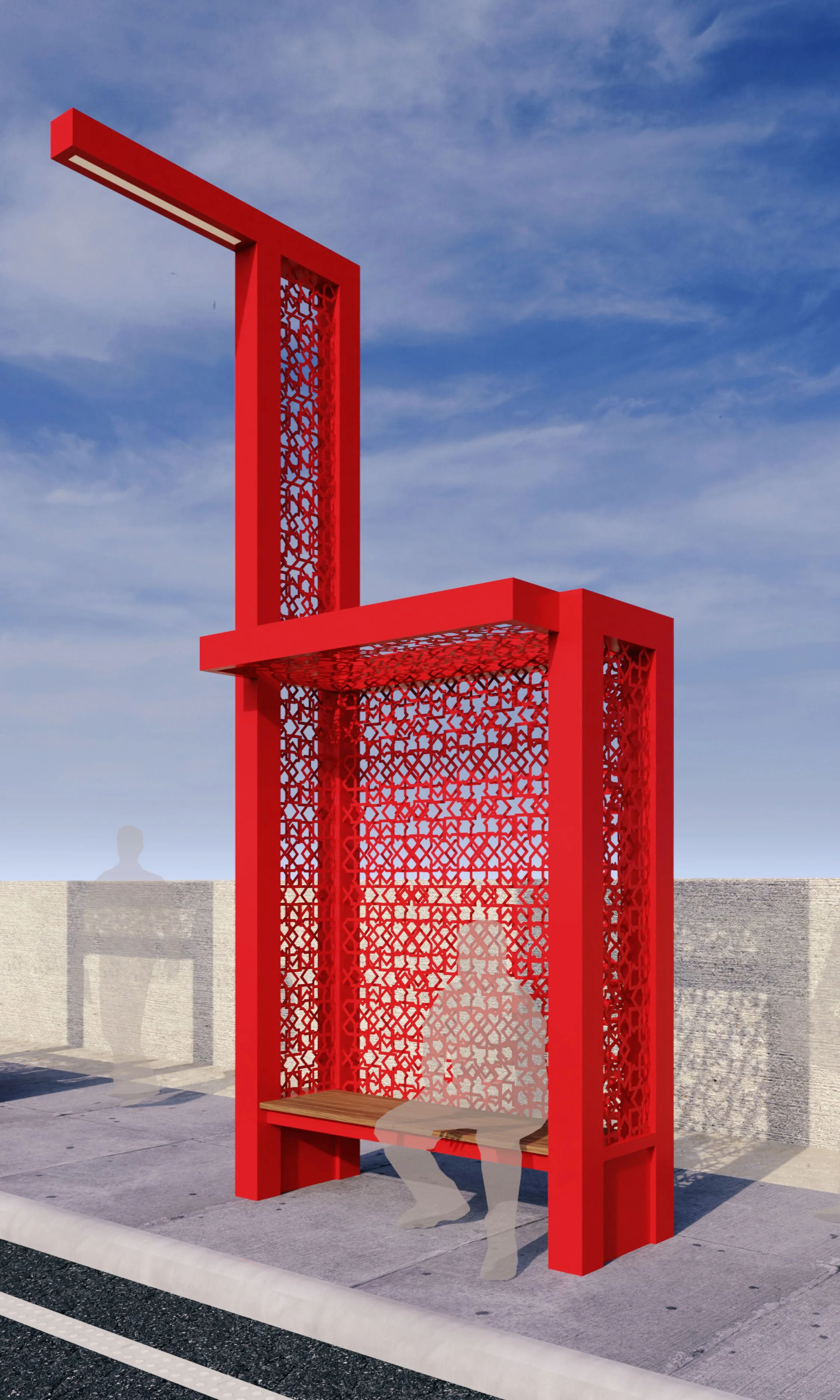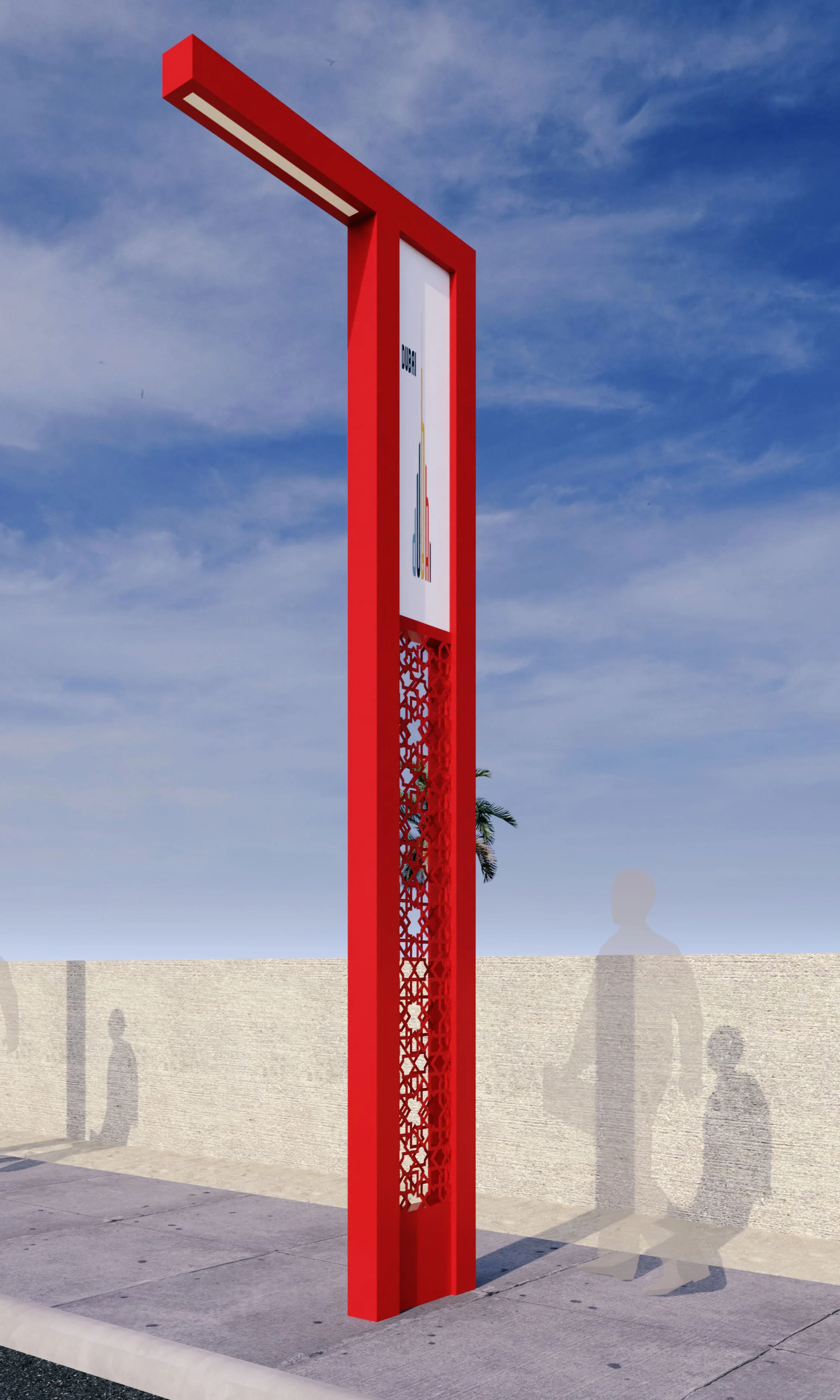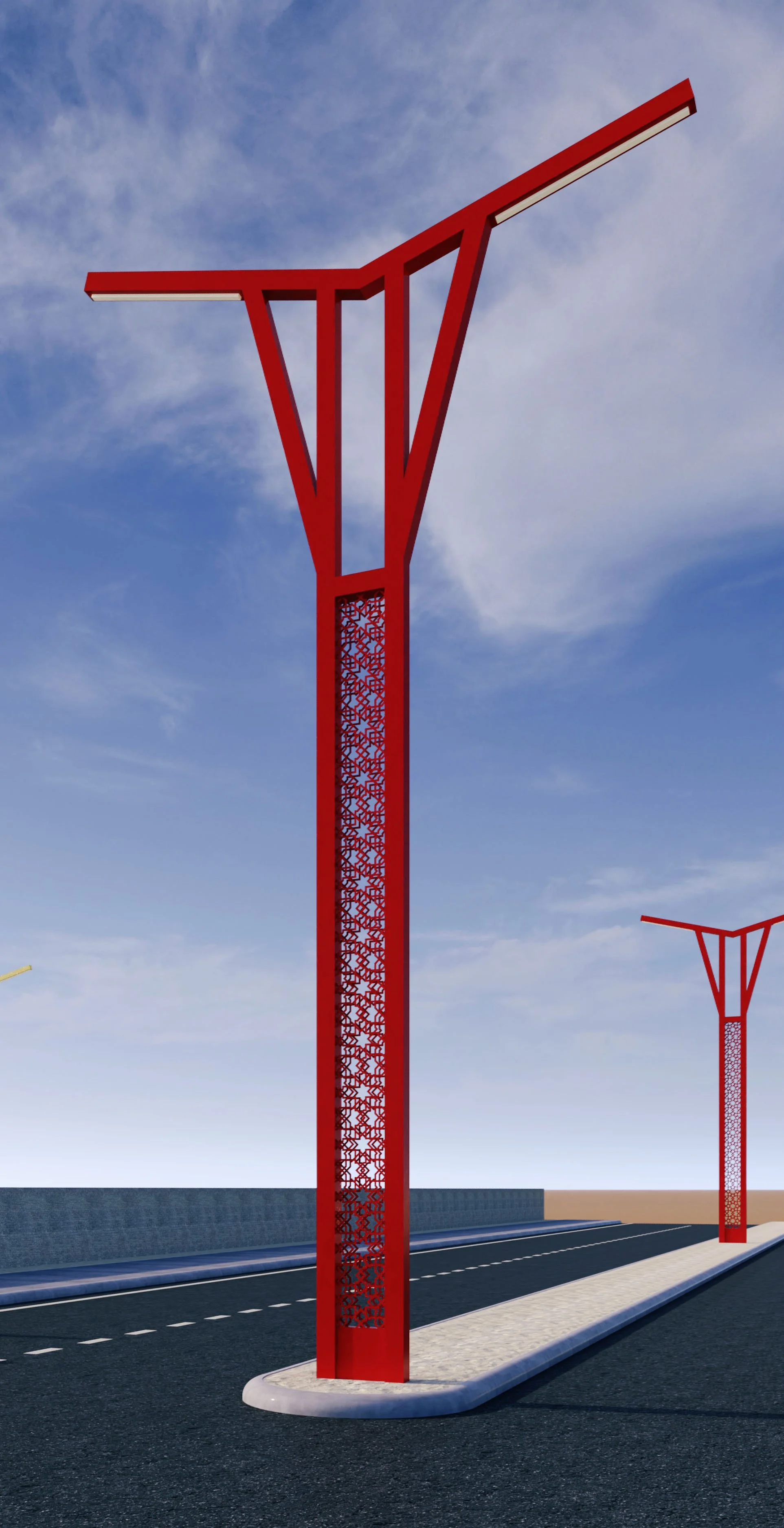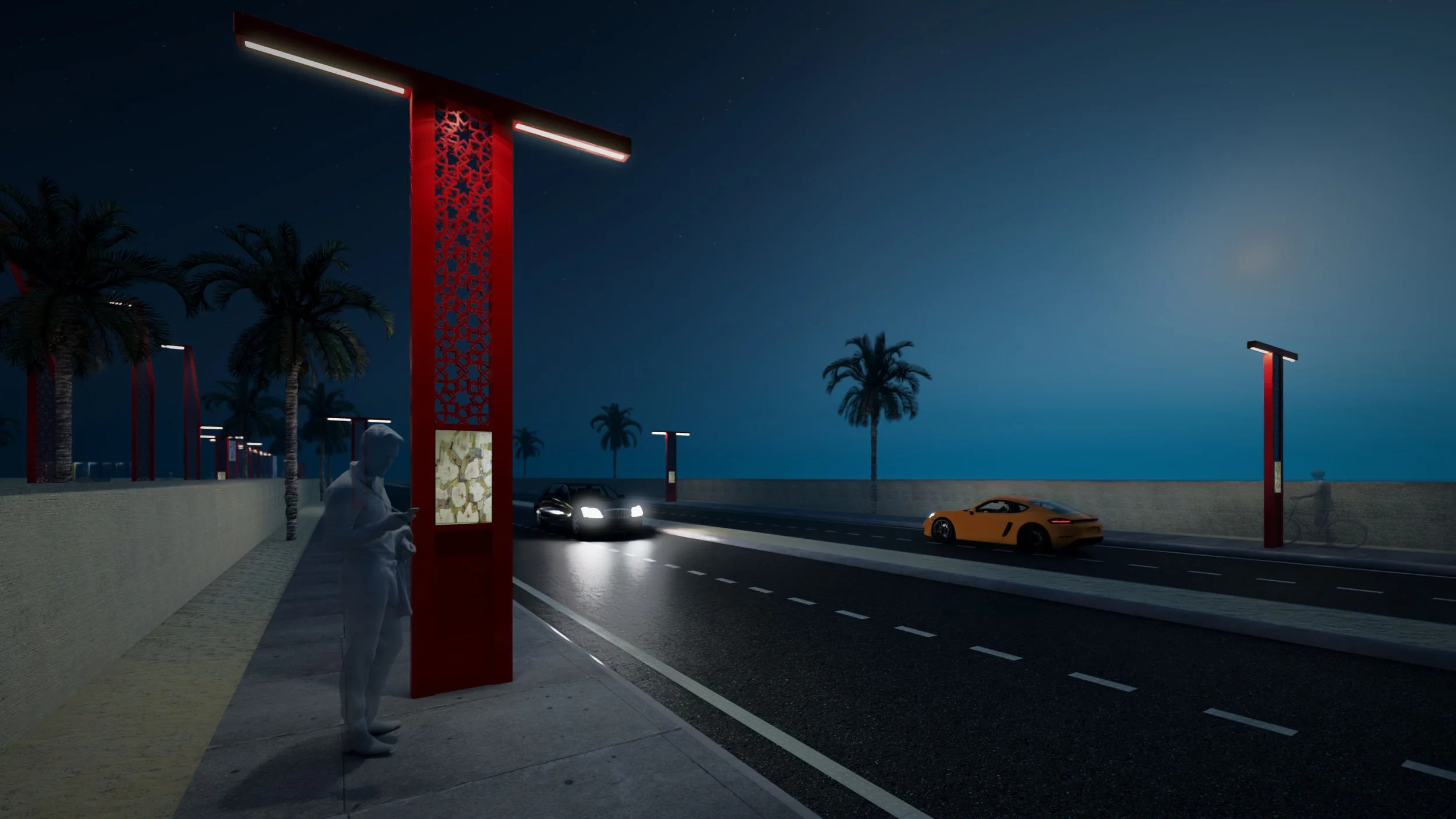
Dubai Urban Elements
Dubai, UAE
Light Patterns
The consistent, repetitive and small objects that surround us are often ignored and passed by without comment, but they are the very elements that define a sense of space and place. The distinctive park benches of Central Park, the pavement in St. Peter’s, signage for the Paris Metro; all define distinguish their respective cities. Some of these elements are simple and utilitarian while others are expressive and consciously try to differentiate themselves from other similar elements. Regardless of design willfulness, it is the specificity of repeatable elements, working in concert with together, that make one city distinct and memorable. For Dubai, we have revisited the ubiquitous light pole to create a signature design system for the emirate and the local zones and neighborhoods.
The light pole is a clear marker of modernity for the urban environment. With the advent of electrical illumination, we see a clear break from the 19th Century into the 20th, where towns can transcend the limitations of daylight, where cities could remain open and vibrant 24 hours a day, changing our relationship to natural cycles and to each other. Whether increasing safety or allowing extended occupation or providing moments for design flourishes, the simple light pole changed how we use, observe and occupy our towns. As the 20th century progressed, the design of the simple pole has tended towards a reduced expression and the cobra headlight became a standard that transcends geography and cultures. We see the same light being used across nations, scales, speeds and cultures. While there is much to be said for a simplified design tool like a light pole, we feel that the particularity of place has been lost, and that one neighborhood or city looks the same as the next. We see this competition as an opportunity to shift this flattening of expression by creating a design system that reflects our differences, celebrating what makes one place special over another.
“Light Patterns” is a rumination on the possibility of creating a city specific system of urban furniture that can respond to local conditions while retaining a cohesive language that creates a sense of place. We have proposed a system that starts with the singular task of lighting and that can be applied to innumerable design problems. We have limited design elements without sacrificing design solutions to create a system that is easily deployable and scalable. The primary elements include a simple tubular structure of recycled aluminum, a patterned panel that allows location specific designs, color choices that operate across large swaths or can be used in limited locations, and finally a few added elements to extend the viability and uses of the system. These additional elements include tools such as solar panels for sustainable energy, touch screens for information hubs, banners for signage, seating materials, or bins for refuse collection. Regardless of how they used, they will still fit within a common design language across the emirate. Whether in an industrial area, the desert or high-density towers, this design language is specific enough to be of and for Dubai, while being simple enough to allow for a multitude of applications.
In the following boards, we have shown examples of some of the unlimited design options that might be envisioned. We have also strived to show how one might use varying versions of the design elements to compose a tapestry of urban furniture that will give structure across the emirate while also allowing others that follow, creating their own highly localized solutions.

